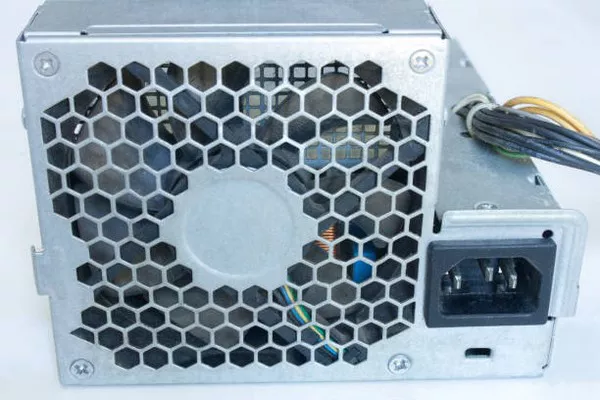In today’s world, where power outages can disrupt daily life and business operations, having a reliable backup power solution is essential. Generac generators are among the most popular choices for both residential and commercial backup power needs. As with any electrical system, ensuring proper installation and safety is crucial. One common question that arises in the installation of these generators is whether a ground rod is necessary. This article explores the necessity of grounding Generac generators, the role of ground rods, and best practices for safe and efficient generator operation.
Understanding Grounding and Ground Rods
Before delving into the specifics of Generac generators, it is important to understand the concept of grounding and the function of ground rods. Grounding is a critical safety measure in electrical systems. It involves creating a direct physical connection between the electrical system and the earth, which helps to protect people and equipment from electrical faults. A ground rod, typically a metal rod driven into the ground, serves as this physical connection.
The primary purposes of grounding are to:
Prevent Electric Shock: By ensuring that any stray electrical currents are safely directed into the ground, grounding reduces the risk of electric shock to individuals.
Protect Equipment: Grounding helps to protect electrical equipment from damage caused by surges or faults.
Enhance Electrical System Performance: Proper grounding can improve the stability and performance of the electrical system.
Generac Generators: An Overview
Generac is a leading manufacturer of generators, offering a range of products from portable models to whole-house standby generators. Generac generators are known for their reliability and advanced features, including automatic start capabilities and remote monitoring.
Generac offers two main types of generators:
Portable Generators: These are typically used for temporary power needs, such as during camping trips or emergency situations. They are usually smaller and designed to be easily moved from one location to another.
Standby Generators: These are permanently installed and automatically activate when the main power source fails. Standby generators are typically connected directly to the home’s electrical system and are used to provide continuous power during extended outages.
Grounding Requirements for Generac Generators
The grounding requirements for Generac generators depend on several factors, including the type of generator, its installation environment, and local electrical codes. Here’s a closer look at how these factors influence the need for a ground rod.
1. Portable Generators
For portable generators, the grounding requirements can vary based on the model and its intended use. Generally, portable generators are designed to be grounded through their frame, which should be connected to a grounding system if used in a stationary setup.
Frame Grounding: Most portable generators come with a grounding point that should be connected to a ground rod when the generator is used in a stationary position. This helps ensure that any stray electrical currents are safely directed into the ground.
Local Codes and Regulations: It is essential to check local electrical codes and regulations, as they may have specific requirements for grounding portable generators. Some jurisdictions may require a separate ground rod for portable generators, while others may allow grounding through a properly connected extension cord.
2. Standby Generators
Standby generators, which are permanently installed and connected to a home’s electrical system, have more stringent grounding requirements.
Dedicated Ground Rod: According to the National Electrical Code (NEC) and Generac’s installation guidelines, standby generators typically require a dedicated ground rod. This ground rod should be installed in accordance with local codes and specifications to ensure proper grounding.
Bonding and Grounding: Standby generators often have separate bonding and grounding requirements. The generator’s frame must be bonded to the grounding system of the electrical panel. This ensures that any fault currents are effectively directed to the ground, enhancing safety and protecting equipment.
Installation Best Practices
Proper installation is crucial to ensure the safe and efficient operation of Generac generators. Here are some best practices for grounding and installing your generator:
1. Consult the Manufacturer’s Guidelines
Always refer to the manufacturer’s installation manual for specific grounding requirements. Generac provides detailed instructions for each model, including recommendations for grounding and bonding.
2. Follow Local Codes and Regulations
Local electrical codes and regulations may have specific requirements for grounding generators. It is essential to adhere to these codes to ensure compliance and safety.
3. Hire a Qualified Electrician
For both portable and standby generators, it is advisable to hire a qualified electrician for installation. A professional electrician will ensure that the generator is properly grounded, bonded, and connected to the electrical system according to code.
4. Use Quality Materials
When installing a ground rod, use high-quality materials that are resistant to corrosion. Copper or galvanized steel rods are commonly used for grounding. Ensure that the ground rod is properly driven into the earth and that all connections are secure.
5. Regular Maintenance
Regular maintenance of your generator and grounding system is important to ensure ongoing safety and performance. Inspect the ground rod and connections periodically for signs of corrosion or damage, and address any issues promptly.
See Also When and Why You Might Need a Generator
Conclusion
In summary, grounding is a critical safety measure for both portable and standby Generac generators. For portable generators, grounding through a frame connection or a ground rod may be required, depending on local codes and usage. Standby generators typically require a dedicated ground rod and adherence to specific bonding and grounding practices.
Proper installation and maintenance are key to ensuring the safe and efficient operation of your generator. Always consult the manufacturer’s guidelines, follow local codes, and consider hiring a qualified electrician to handle the installation. By adhering to these best practices, you can ensure that your Generac generator operates safely and effectively, providing reliable backup power when you need it most.

